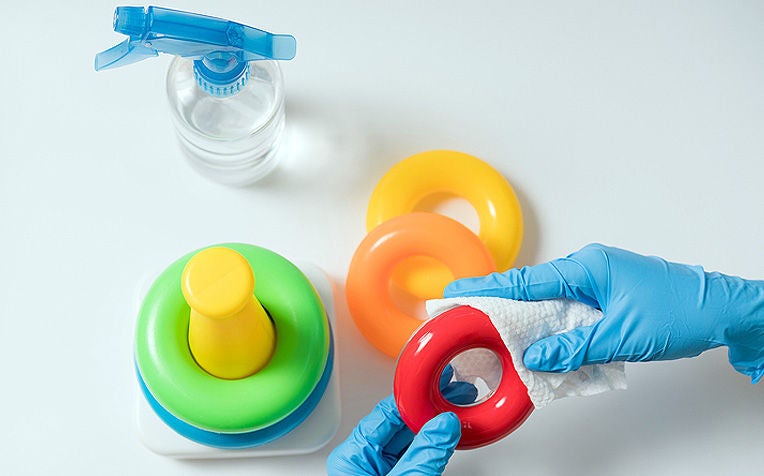
Cleanliness is beneficial for everyone – child and family – making it less likely for anyone to catch an infection.
It can be nerve-racking for a parent to confront the endless list of infectious diseases that children can catch, especially in view of the heightened attention on hygiene and cleanliness due to the pandemic.
Dr Jade Soh, Consultant from the Department of Infectious Diseases at Sengkang General Hospital (SKH), a member of the SingHealth group, helps us bust some common myths and shares on what to do to prevent infectious diseases among children.
How our immune system works
Everyone has two immune systems that help us fight germs that enter the body and defend it against infections / diseases.
Innate immune system
It goes into action upon recognising a germ that’s invading the body. The cells of this immune system surround and cover the invader. The invader is killed inside the immune system cells.
Acquired immune system
It helps the innate system to make antibodies to protect your body from a specific invader. The antibodies stay in your child’s body, and it can take several days for antibodies to form. But after the first exposure, the immune system will recognise the invader and defend against it. Usually the older you get, the more germs you become immune to.
Dr Soh addresses common myths about cleanliness and the immune system.
Myth 1: A super clean environment and lack of exposure to germs can make a child more prone to sickness
Not true – This idea comes from the ‘hygiene hypothesis’ but it is still a working theory and remains debatable among scientists. It comes from the observation that children who grew up in wealthy and developed countries are more likely to develop asthma or hay fever. Dr Soh reaffirms the fact that a clean environment is good for the family and children, making it less likely for anyone to catch an infection.
Myth 2: Exposure to more germs builds up immunity
True and not true – Dr Soh explains that being exposed to more germs can have both positive and adverse impact on the immunity of the children.
“Certain exposure to germs can lead to lifelong protection. If you have contracted chickenpox through the Varicella Zoster Virus (VZV), you will be immune and protected from getting chickenpox after the primary infection,” she says.
However, being exposed to a different type of respiratory virus does not guarantee immunity towards it. Dr Soh explains, “If you get struck by Adenovirus, which causes respiratory illness, you might fall sick with a cold. But you might get the same infective symptoms with Adenovirus in future as it has many subtypes. Being infected with one subtype does not lead to immunity to the other subtype of this virus.”
Being exposed to ‘more’ germs also means you are more likely to be unwell ‘more’ times.
Myth 3: There are ‘good’ and ‘bad’ germs
True – ‘Good’ germs are the microorganisms that live in your body and are termed ‘microbiome’. “The germs that live in your gut are called gut microbiomes. They are important for your gut health and help in digesting food. But the ‘bad germs’ are the ones we should be wary of as they make you fall sick, such as Salmonella that causes diarrhoea, and SARS-CoV2 that causes the COVID-19 pandemic,” shares Dr Soh.
Myth 4: The five-second rule – It’s safe to pick up and eat food your child dropped on the floor
Not true – Dr Soh emphasises that this is a myth with no scientific proof. “If your child’s biscuit drops on a walkway with many passers-by, you should not let your child continue eating the biscuit even if it was only on the floor for two seconds.”
This article was adapted from Skoop magazine (issue 7).
Ref: L20
Check out other articles on vaccination:
Child Vaccination Schedule (from 15 months to 11 years old)
Pneumococcal Vaccination: Why Children Need It
Your Best Protection Against the Flu (Influenza)
Contributed by


















 Get it on Google Play
Get it on Google Play